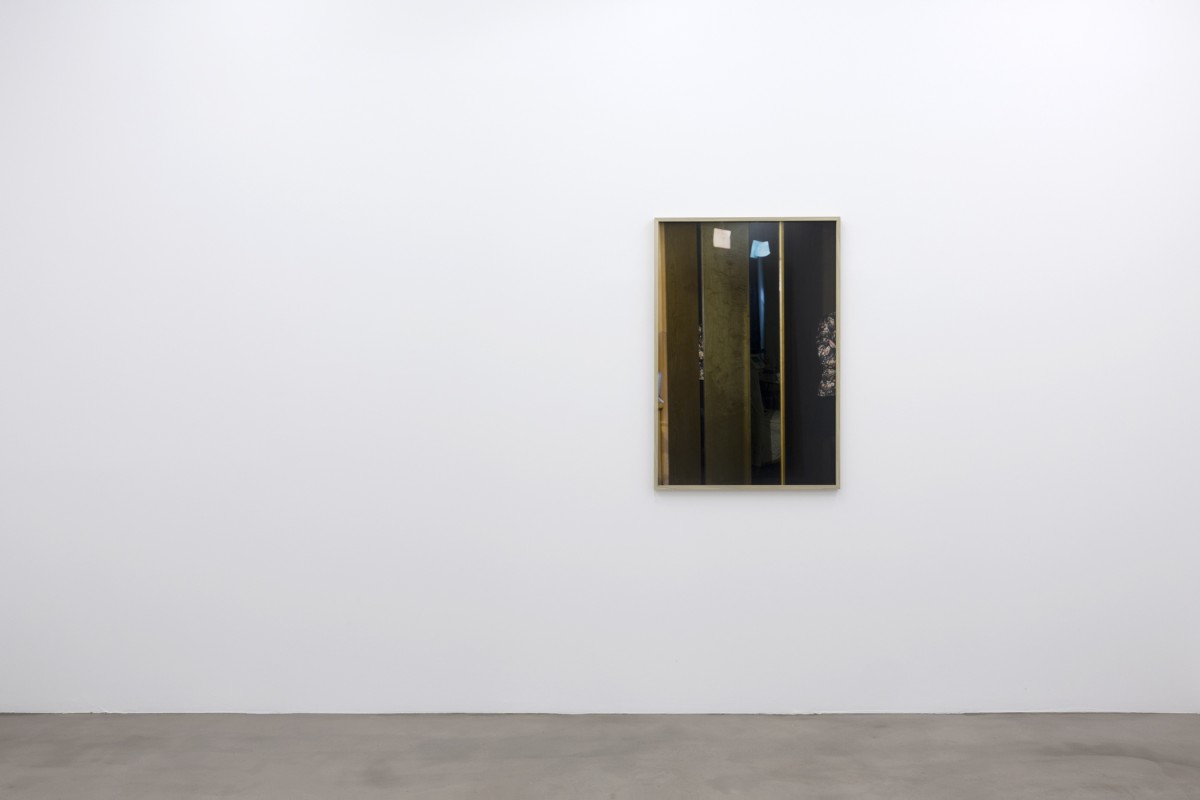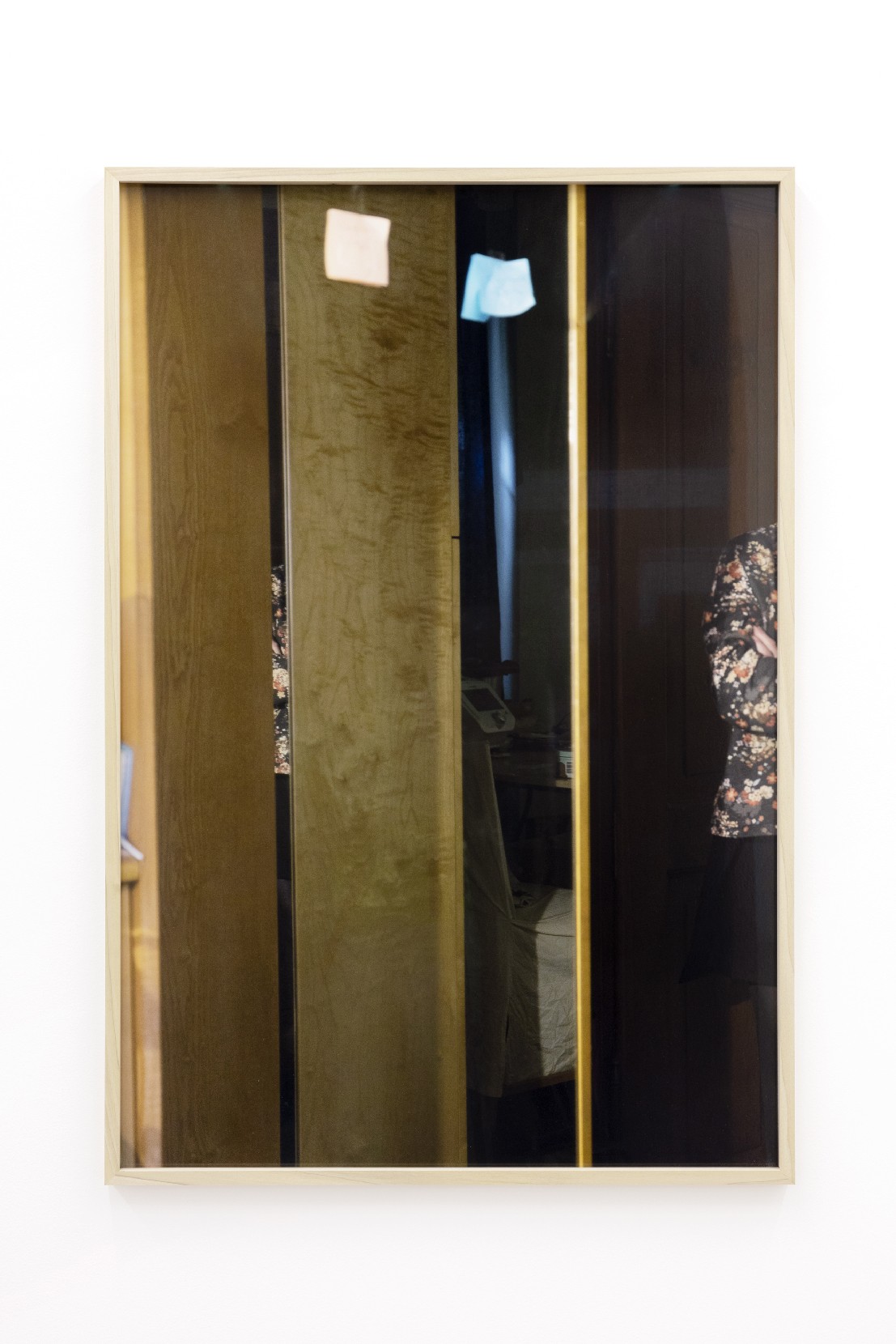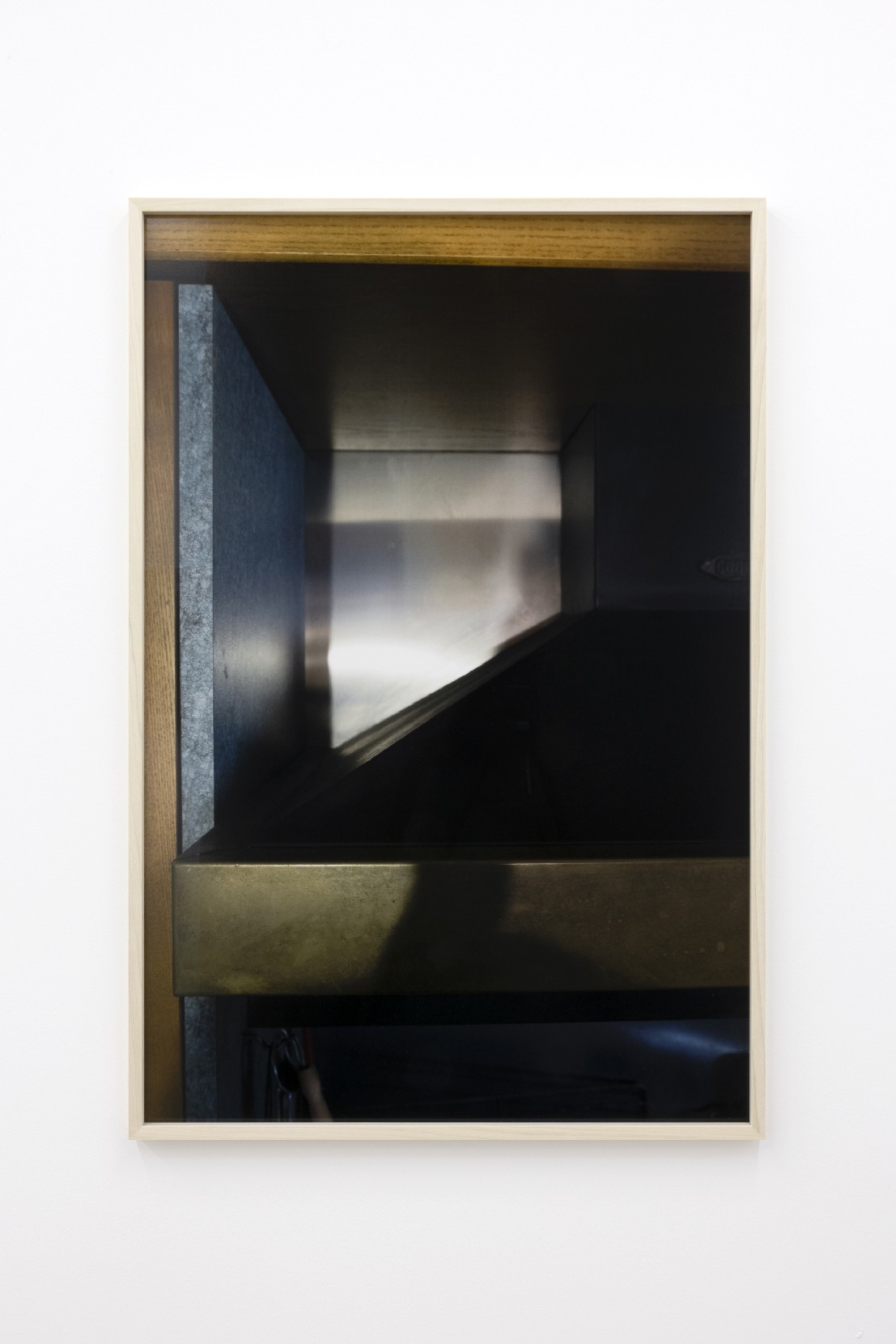Memorializing the most common and personal subject, namely close individuals, their achievements, and surroundings, is one of the earliest popular uses of photography. Niklas Taleb operates in this memory-constituting tradition of family and portrait photography. His works cultivate a particular sense of intimacy by showing the activity of maintaining and attending to a family, friendships, supplementary work, and an artistic practice—all while reciprocating between proximity (depicted private sphere) and distance (artwork) to the viewer.
The photographs on view in Taleb’s first solo exhibition, Hyper Edit, at Édouard Montassut characteristically shift between casual, jaunty composition and precise construction. The individual works are presented with delicate handmade frames, either crafted from wood or from taped-together panes of glass. In the pictures there are things in view that bear people’s presence through their absence: eight photographic prints, varying in size, unveil whatever has been accumulated over time—objects, memories, and the domestic and psychological spaces they inhabit.
In two photographs, the gaze of the portrayed wanders to a point outside of what is visible; in two others, the portrayed engage in a task of care, facing away from the person taking their picture, as if not noticing them. Other works are characterized by an attention to the quiet, overlooked details of everyday domestic life: in Küche (2022), gentle specks of light entering through an open room door rest on a wall, illuminating parts of a kitchen cabinet and extractor hood. Cracks in the wall meander along stairs in Münchner Straße 41 (2022), fronted by a buckled and well-worn measuring stick. Untitled (2022) bears the intricate composition of an actual interior in penumbra and part of a person, as well as the reflection of both in a mirror in the blurry foreground.
It is the in-between state of the interiors and exteriors of both people and the architectures they inhabit that remains at the center of Taleb’s exhibition. The artist lets us partake in the mundane yet most intimate moments, relations, and settings of the lives of members of his actual and extended family; reminding us in passing that kinship (as in “being related”) must also be formed in more provisional arrangements.
Gloria Hasnay
 >
>
 >
>
 >
>
 >
>
 >
>
 >
>
 >
>
 >
>
 >
>
 >
>
 >
>
 >
>
 >
>
 >
>
 >
>